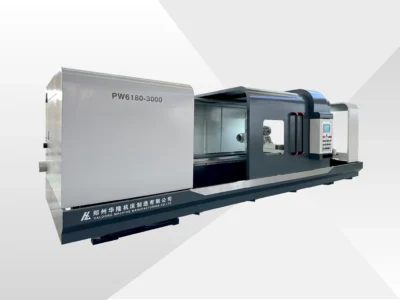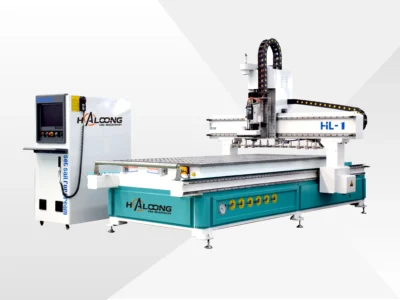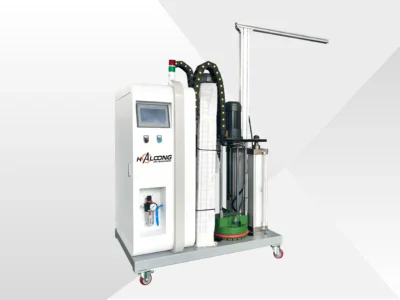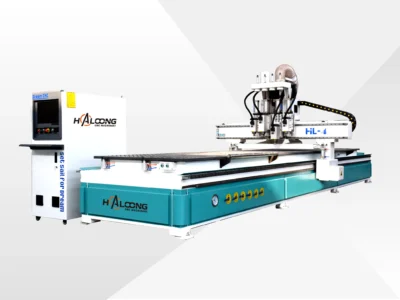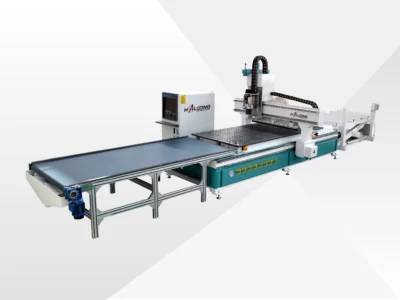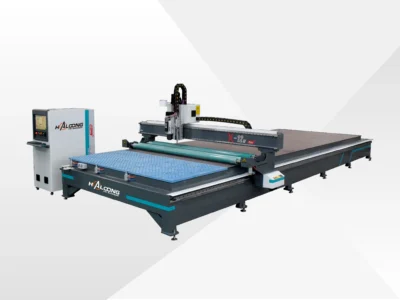
How to Choose a CNC Router for Beginners: A Comprehensive Guide from Entry to Mastery
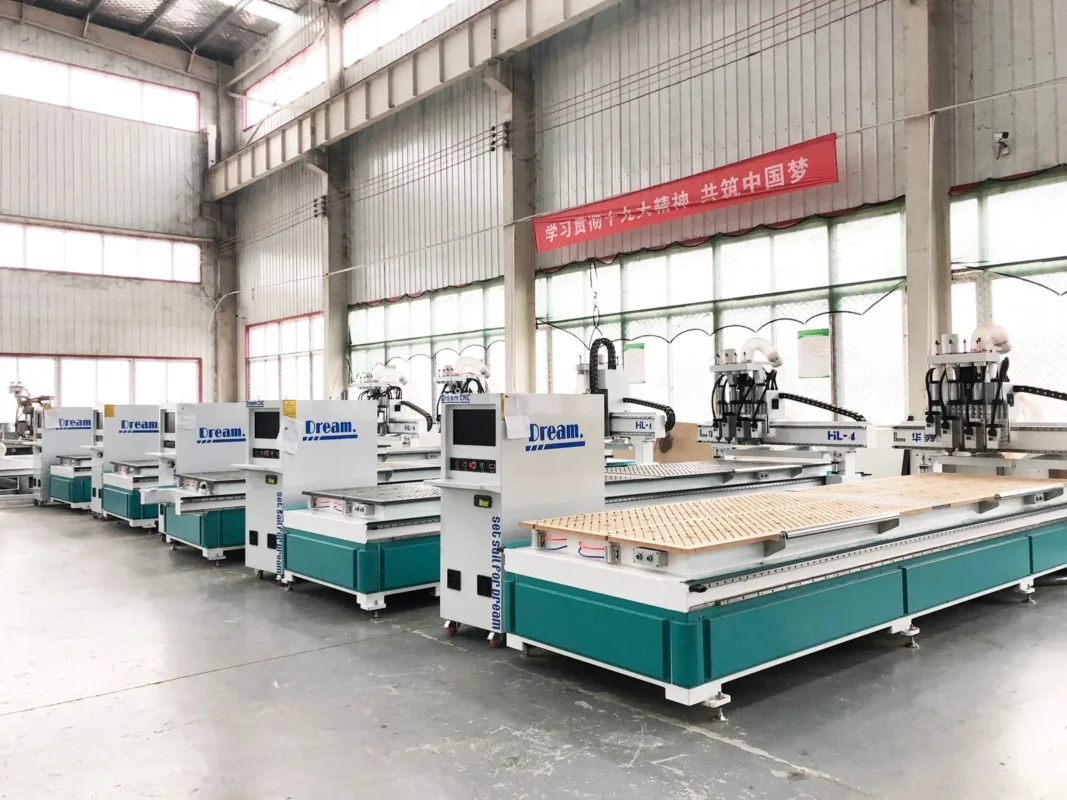
Introduction:
For beginners venturing into panel furniture production, selecting the right CNC router is crucial. Faced with a dazzling array of brands, models, and configurations on the market, it’s easy to feel overwhelmed. This guide, centered around “how to choose a CNC router for beginners,” combines industry experience and professional knowledge to provide you with a comprehensive and easy-to-understand selection guide. We aim to help you start from scratch and choose a cost-effective machine that meets your production needs. We will delve into different types of CNC routers, key configurations, practical features, and tips to avoid common pitfalls, helping you become an expert in CNC router selection.

I. Choosing a CNC Router for Beginners: Define Your Production Needs First
Before you start selecting a CNC router, clearly understanding your actual production needs is the crucial first step. This is like laying the foundation before building a house, ensuring that subsequent choices won’t go astray.
1.1 Understand Your Production Needs: Processing Types, Output Requirements, Space Limitations, etc.
What types of furniture do you need to process? Simple cabinet doors and carcasses, or complexly carved custom furniture? What are your daily or monthly output goals? Are there any size restrictions on your factory space? These questions will directly influence your choice of CNC router type and configuration. For example, if you mainly produce standardized cabinets, an economical four-process CNC router might be sufficient for your needs.
1.2 Detailed Explanation of CNC Router Types: Choose the Right Model for You
There are many types of CNC routers on the market, and beginners often get confused. Below, we will explain different types of CNC routers in detail based on their functions and tool magazine configurations to help you better understand their characteristics and suitable applications.
1.2.1 Four-Process CNC Router: Economical and Practical Choice
- Suitable Scenarios: Simple cabinet door and carcass processing (cutting, drilling), small factories or startups with limited budgets.
- Advantages: Relatively low cost, easy to operate and get started with. Usually equipped with four spindles that can automatically switch to complete basic cutting and drilling processes. For beginners with a limited budget, this is a good entry-level option.
1.2.2 Linear Tool Changer CNC Machining Center: Versatile and Efficient Choice
- Suitable Scenarios: Whole house customization, complex process requirements (cutting, grooving, carving, etc.), factories that need to change tools frequently for diversified production.
- Advantages: Equipped with a large-capacity tool magazine (usually 12-20 tools) that can store multiple tools and achieve automatic and fast tool changes, greatly improving processing efficiency. Comprehensive functions can handle more complex process requirements, making it an ideal choice for beginners seeking efficiency and versatility.
1.2.3 No-Drilling Process CNC Machining Center: High-End Precision Choice
- Suitable Scenarios: High-end connection processes such as invisible connectors and crescent-shaped connectors, custom furniture production with extremely high processing accuracy requirements.
- Advantages: Adopts a special processing technology that can achieve seamless connection between panels, making the appearance more beautiful and the structure more stable. Suitable for beginners with extremely high demands for product quality.
1.2.4 Rotary Tool Changer CNC Machining Center: Artistic Carving Choice
- Suitable Scenarios: Complex carving needs such as relief and hollowing, suitable for processing artistic furniture or decorative panels.
- Advantages: Fast tool change speed, suitable for complex curved and three-dimensional carving, can meet the needs of beginners with special requirements for artistic shapes.
1.3 Beginner Buying Advice: Choose Based on Your Starting Needs
- Mainly processing cabinet doors and carcasses initially? Prioritize an economical and practical four-process CNC router, which can meet your basic initial production needs.
- Future needs for complex processes or production expansion? Choosing a more versatile linear tool changer CNC machining center offers greater flexibility to cope with future development.
II. Choosing a CNC Router for Beginners: Core Configuration Determines Machine Quality
The core configuration of a CNC router is like the bones and organs of a person, directly determining the machine’s performance and service life. For beginners, understanding the following key configurations is crucial.
2.1 Spindle: The “Heart” of the CNC Router
- Power Selection: It is recommended to choose a spindle with a power of no less than 6kW to ensure cutting efficiency and accuracy. For machining centers that need to process deeper or harder materials, you can consider 9kW or even higher power spindles. When considering CNC router spindle power, assess your processing requirements carefully.
- Type Selection: Prioritize imported air-cooled spindles (such as Italian HSD), which usually have a longer service life and higher stability, providing reliable support for your production. Opting for a reputable spindle brand, such as HSD for air-cooled spindles, ensures machine stability.
PS: You can learn more about spindle maintenance here
2.2 Motor and Drive: The “Nervous System” for Precise Operation
- Stepper Motors: Relatively low cost, suitable for simple processing scenarios with low loads and low precision requirements. If you are only doing very basic panel cutting, you can consider them.
- Servo Motors: It is strongly recommended to choose servo motors from well-known brands such as Leadshine, Delta, or Yaskawa, which have higher precision and faster response speeds, and are more capable of handling complex processing techniques, ensuring your product quality. When selecting a CNC router motor, prioritize servo motor brands like Leadshine, Delta, or Yaskawa.
2.3 Transmission System: The “Skeleton” for Stable Efficiency
- X/Y Axis: Opt for imported helical rack and pinion transmission (such as German Neugart). Compared to ball screw transmission, it is more wear-resistant and can maintain longer-lasting accuracy, ensuring the stability and precision of the CNC router even during long-term high-load operation. Choosing a quality CNC router transmission system, such as helical rack and pinion, especially from reputable brands like Neugart, ensures the long-term stable operation of the machine.
- Z Axis: It is recommended to use a high-precision ball screw to ensure the stability and precision of the spindle in the vertical direction, which is crucial for processes such as drilling and grooving.
2.4 Guide Rails and Bed Frame: The “Foundation” for Sturdiness and Durability
- Guide Rails: Imported square linear guides (such as Taiwan Hiwin) are superior to round rails in terms of load-bearing capacity and resistance to deformation, making them a more reliable choice that can ensure the smooth operation of the CNC router at high speeds. Select the appropriate type of CNC router guide rails, such as square linear guides, and prioritize well-known brands like Hiwin.
- Bed Frame: Choose a bed frame made of all-steel structure and processed by five-sided milling, with a thickness of no less than 12mm, to effectively avoid machine vibration during high-speed operation and ensure processing accuracy. A sturdy CNC router bed frame is the foundation for stable machine operation, and choosing an all-steel bed frame provides better support.
III. Choosing a CNC Router for Beginners: Selection Tips for Key Functions and Accessories
In addition to the core configuration, the selection of some key functions and accessories will directly affect your user experience and production efficiency.
3.1 Vacuum Table and Vacuum Pump: Efficient Fixing “Assistants”
- Table Type: A full vacuum table is more suitable for processing whole boards; a partitioned vacuum table is more power-saving and convenient for fixing when processing small boards. Although a vacuum and clamp table has multiple functions, its practicality in actual applications may be limited. It is recommended that beginners choose according to their main processing board sizes when considering a CNC router vacuum table.
- Vacuum Pump: It is recommended to choose an air-cooled vacuum pump in cold regions to prevent the water-cooled vacuum pump from freezing in winter; in less cold regions, a water-cooled vacuum pump has lower noise and is also a good choice. Based on the climate conditions of your region, select the appropriate vacuum pump type, such as an air-cooled vacuum pump in cold areas.
3.2 Control System: The “Brain” for Intelligent Operation
- Recommended Brands: Choose mainstream and reputable control systems such as Syntec or LNC, which are usually powerful and reliable, supporting practical functions such as automatic tool change and tool life management, which can help beginners operate the machine more easily. Opt for a mainstream CNC router control system, such as a Syntec control system or an LNC control system.
- Software Compatibility: Ensure that the control system can seamlessly connect with your CAM software and support higher-precision processing needs such as secondary fine milling, improving your production efficiency and product quality. Choosing a control system that achieves CAM software compatibility is very important.
3.3 Other Important Accessories: Details Determine Success
- Inverter: Choose brands with strong stability such as Delta or Fuling to ensure the reliable operation of the motor. For beginners, choosing a stable CNC router inverter brand like Delta or Fuling is crucial.
- Tools: Three-flute spiral bits have higher cutting efficiency, and their chip-breaking design can effectively reduce burrs during processing and improve the finish of your products. Selecting the right CNC router tools, such as three-flute spiral bits, can improve processing efficiency and product quality.
IV. Choosing a CNC Router for Beginners: Factory Inspection is Key to Avoiding Pitfalls
For beginners, choosing a reliable CNC router manufacturer is crucial, which can effectively avoid various problems during later use.
4.1 Technical Capabilities:
Investigate whether the manufacturer has an independent R&D team and whether the equipment is continuously undergoing technological iteration and upgrades, which represents the manufacturer’s innovation capabilities and investment in the future.
4.2 Production Process:
It is recommended that you visit the manufacturer’s processing equipment and production line in person. Fully automated production lines can usually better guarantee product quality and production efficiency.
4.3 After-Sales Service:
Understand the manufacturer’s warranty period, the speed of parts supply, and software upgrade support and other service terms in detail, and be sure to write these into the contract to protect your rights.
V. Choose a CNC Router for Beginners: The Balance Between Budget and Performance
Beginners often need to find a balance between budget and performance when purchasing a CNC router.
5.1 Basic Model (Four-Process):
Suitable for small-scale production with a limited budget and low functional requirements, it is an economical choice for beginners.
5.2 Mid-to-High-End Model (Linear Tool Changer):
High cost-performance ratio, comprehensive functions, can meet the needs of most panel furniture production, and is an ideal choice for beginners seeking efficiency and versatility.
5.3 High-End Model (No-Drilling Process/Rotary Tool Changer):
Suitable for high-end custom furniture production with extremely high process requirements, suitable for beginners with extremely high demands for product quality.
Tips to Avoid Pitfalls: Be sure to be wary of excessively low price traps! Some unscrupulous manufacturers may use inferior guide rails, second-hand motors, or simplified assembly processes to compress costs, which will lead to insufficient equipment accuracy and high failure rates, ultimately affecting your production efficiency and product quality. Beginners should remember not to just look at the price, but to comprehensively consider the configuration and the manufacturer’s reputation.
Conclusion: How to Choose a CNC Router for Beginners?
For beginners, the selection of a CNC router should follow the principle of “needs first, reasonable configuration, and reliable manufacturer.” Among the many influencing factors, spindle power, transmission system, and control system are the three core focus points. It is strongly recommended that you visit manufacturers (such as HALOONG and other reputable brands) in person before making a final decision, carefully compare the processing effects of different models, and be sure to request a test run report. Through scientific planning and careful selection, a suitable CNC router will significantly improve your production efficiency and help you stand out in the highly competitive furniture market.If you are in Southeast Asia, South Asia, Central Asia and other regions and need some special advice, you can refer to this blog.
Related Products
HALOONG CNC Cylindrical Shaft Polishing Machine
Dual Station Table Linear ATC CNC Wood Router: Automatic Tool Changer Wood CNC for Furniture Making
Why the HALOONG 12-Tool ATC CNC Wood Router Stands Out
The HALOONG 12-Tool ATC CNC Wood Router is a high-performance wood CNC machine built for exceptional efficiency and flexibility. Its automatic tool changer (ATC) switches between 12 tools in under 5 seconds, drastically reducing downtime and boosting output. Whether you’re cutting MDF, carving solid wood, or crafting intricate designs, this CNC wood router handles it all with ease. For even greater productivity, consider our optional dual-table configuration, which allows for near-continuous operation and significantly increases throughput for demanding production schedules.
Key Features of This CNC Wood Router
Here’s what makes this wood CNC a must-have:
Ultra-Fast Tool Switching
- 12-tool linear magazine: Holds a variety of tools, ready for instant use.
- Tool changes in under 5 seconds: The gantry-integrated design cuts travel time, keeping your production moving.
Versatile Material Processing
- Works with MDF, solid wood, OSB, PVC, acrylic, aluminum, and composite panels.
- Supports standard furniture joints (e.g., dowels and cams) and modern invisible connectors (e.g., Lamello, Peanut, Lockdowel).
- Perfect for cabinets, wardrobes, doors, and artistic carvings.
Customizable Worktable Options
- Options like 4'x8' (1220x2440 mm), 4'x9' (1220x2800 mm), or custom sizes available for single-table models.
- Maximize your output with our optional dual-table configuration, allowing for continuous loading and unloading on separate work zones.
- Upgraded vacuum table locks materials securely for flawless results on both single and dual-table setups.
Effortless Operation
- User-friendly controls with a clear display, network, and USB connectivity.
- Simplified design means even beginners can master it quickly. The dual-table operation is also intuitively managed through the advanced control system.
Built to Last with Precision
- Heavy-duty steel frame and high-precision gearbox for durability.
- Servo-driven system ensures smooth, accurate cuts every time. The robust construction ensures stability even during continuous operation on the dual-table model.
Cleaner, Safer Workspace
- Integrated dust collection and air-blow system keeps debris in check.
- Ideal for continuous, high-output runs without mess, making it perfect for the increased production demands of the dual-table system.
Top-Notch Support
- Free technical support, lifetime service, and remote assistance included.
PUR Glue Machine Kit For Edge Bander
Four-Spindle Dual-Station CNC Wood Router for Panel Furniture Manufactured
Maximize your panel furniture manufacturing throughput with the HALOONG Four-Spindle Dual-Station CNC Router. Expanding on the reliability of our single-station four-spindle CNC wood cutting machines, this dual-station system provides a substantial increase in production efficiency. It's designed for continuous operation, minimizing downtime and maximizing output through its smart workflow.
The clever dual-station workbench facilitates seamless alternating work cycles. While one station is engaged in machining, the operator can efficiently prepare the next batch of materials on the adjacent station. Upon completion of the first cycle, the machine instantly transitions to the pre-loaded second station. This continuous processing approach ensures no wasted time, making it a key asset for high-volume furniture production.



